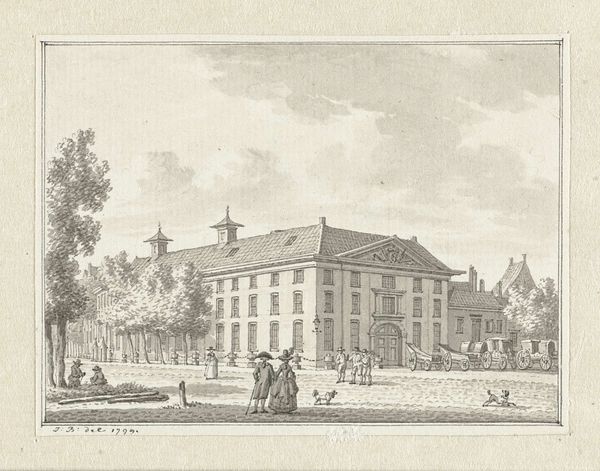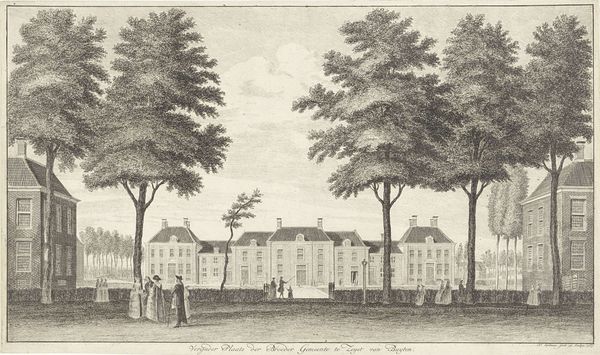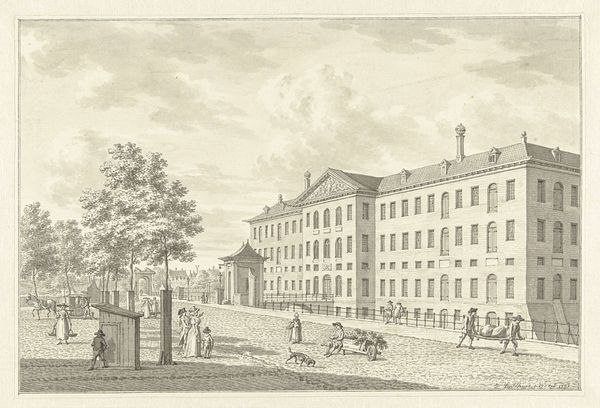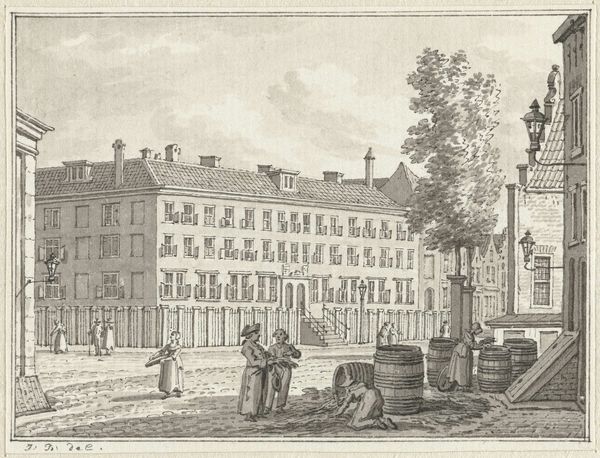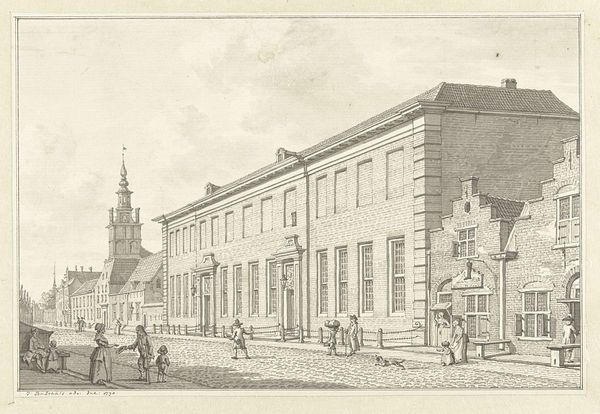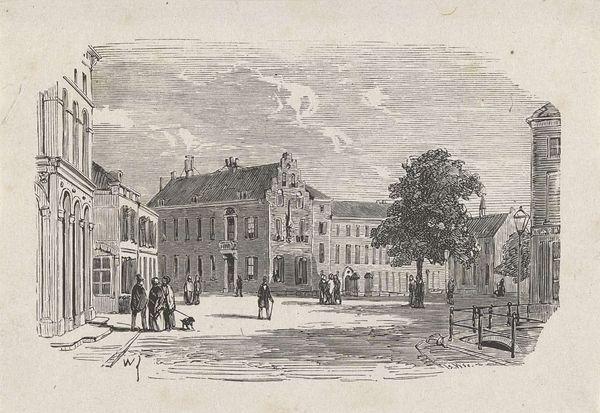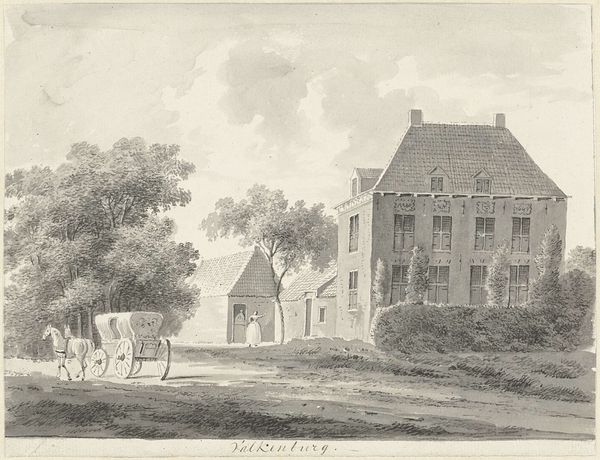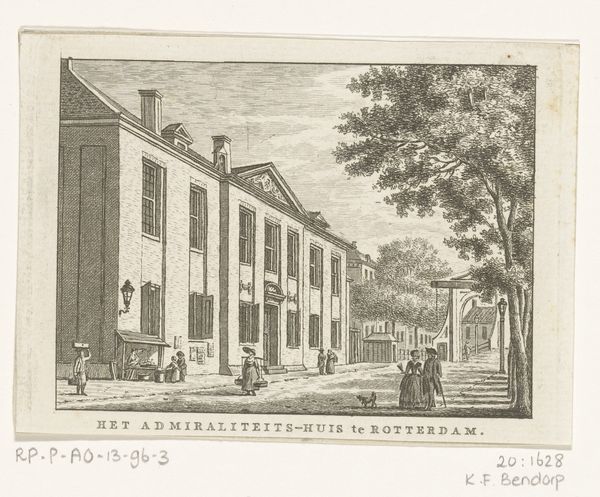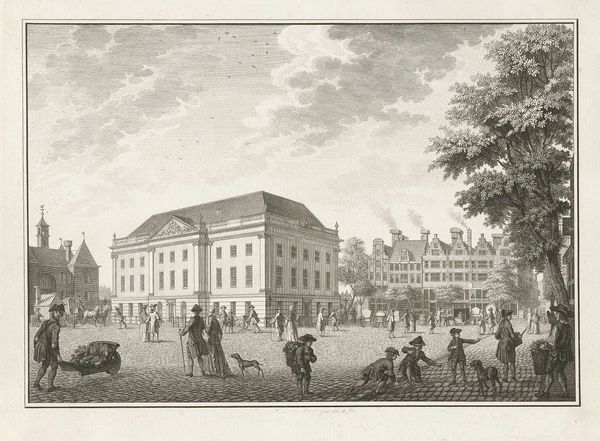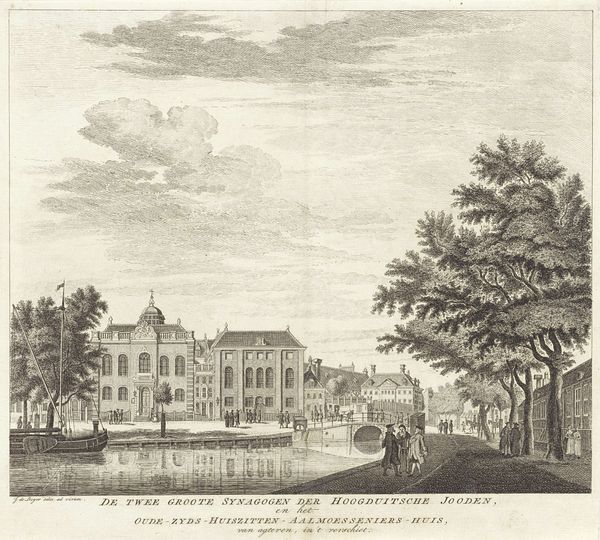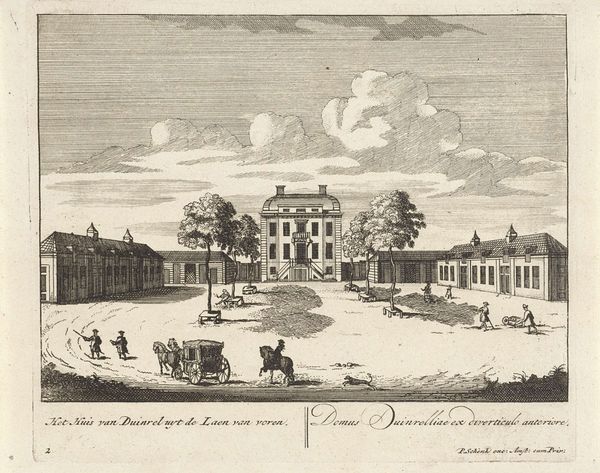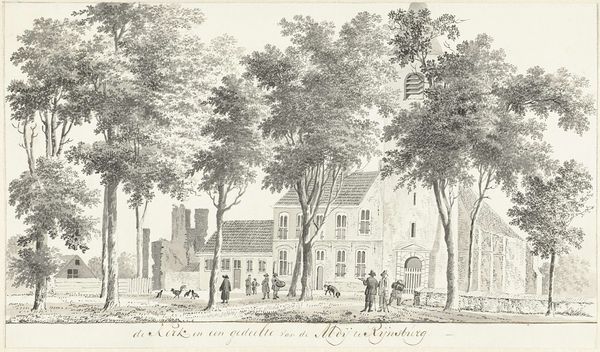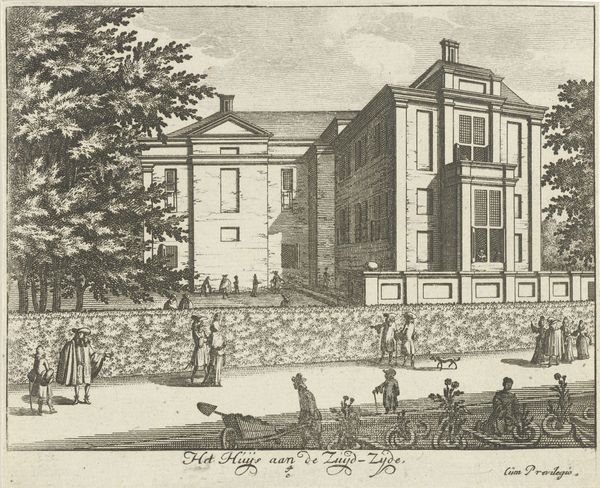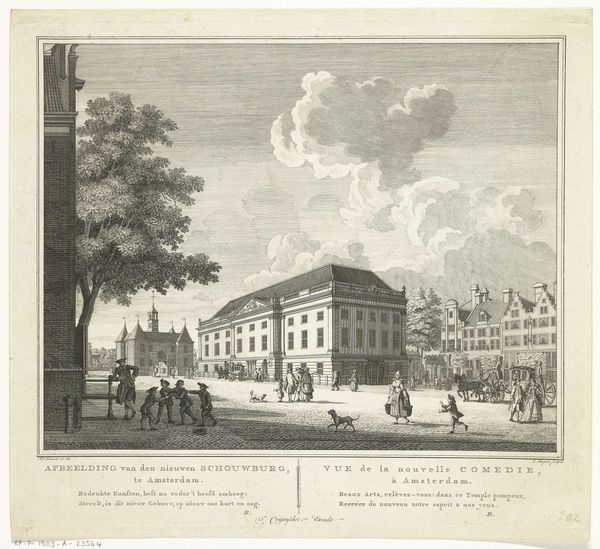
drawing, print, paper, ink, pen, architecture
#
architectural sketch
#
drawing
#
neoclacissism
#
aged paper
#
mechanical pen drawing
# print
#
old engraving style
#
paper
#
ink
#
pen-ink sketch
#
architectural section drawing
#
architectural drawing
#
pen work
#
architecture drawing
#
architectural proposal
#
pen
#
cityscape
#
architecture
Dimensions: height 80 mm, width 105 mm
Copyright: Rijks Museum: Open Domain
Editor: Here we have Jan Bulthuis's "Het Prinsenhof te Rotterdam," created sometime between 1760 and 1801, using pen, ink and print on paper. It feels so precisely rendered, like a technical drawing. What details stand out to you in this piece? Curator: Notice the aged paper, the delicate pen work, almost mechanical in its precision. Bulthuis's piece invites us to consider the materiality of architectural representation. This isn’t just a pretty picture; it’s a document, created through labor. What does this say about the role of drawings like this during that period? Editor: I hadn't considered the labor involved. Maybe it elevates architectural work into a higher art form, emphasizing the skill required? Curator: Precisely! But let's also think about the social context. Who commissioned such drawings? Who consumed them? This level of detail speaks to a specific patron, one who likely valued accuracy and Neoclassical ideals. How might the production and circulation of such images have shaped the built environment of Rotterdam itself? Editor: That's fascinating! Did the circulation of drawings like this contribute to architectural standardization in the Neoclassical style? Curator: Exactly! And consider the means of production – pen, ink, paper, printmaking. Each of these elements contributed to a specific aesthetic and level of reproducibility. This speaks volumes about access to knowledge and power during that era. What if this building was made by other means? Editor: I never thought about architectural drawings in this way before, focusing on materials and context. It opens up a completely new avenue for understanding the piece. Curator: Indeed! Seeing art through a material lens unveils how social structures and artistic processes are inextricably linked.
Comments
No comments
Be the first to comment and join the conversation on the ultimate creative platform.
